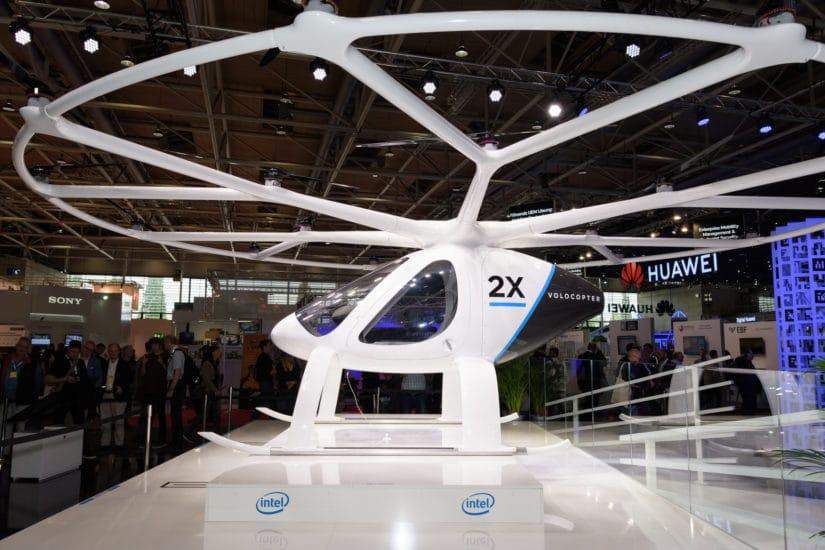Volocopter Expands Its Vision for Flying Cars

As the world’s flying car manufacturers prepare to launch their vehicles, they seem to be reaching the conclusion that the infrastructure needed to support a world of flying cars is nowhere near ready. This, despite the fact that their eVTOLs may be ready for takeoff within two to five years.
Many issues about reliability and safety have yet to get off the ground. These include low-altitude air traffic control and aircraft and pilot certification.
To guide the industry, manufacturers are releasing white papers outlining issues for civic leaders. Volocopter, the Bruchsal, Germany-based eVTOL manufacturer, recently published “Pioneering the Urban Air Taxi Revolution 1.0.”
By 2030, nearly 60 percent of the world’s population will live in cities. This population shift makes urban air mobility (UAM) a viable way to reduce traffic. New battery technology make these solutions possible now.
Volocopter’s paper identifies six areas that need to be addressed before UAM via flying taxis financially feasible:
- Safety and Certification
- Noise Emissions
- Range and Speed
- Operating Costs
- Number of Seats
- Design for Usability
Flying Car Safety and Certification
The European Union Aviation Safety Agency (EASA) published “SC-VTOL-01 — Proposed Special Condition for small-category VTOL aircraft” in October 2018. Its document outlines the airworthiness standards for eVTOL air taxis. The designs and standards stress simplicity to enhance safety and facilitate certification.
Noise Emissions of Urban Air Taxis
Noise reduction will be key for urban air taxis. The relationship between disc loading, tip speed, and noise demonstrates how larger, slower-moving rotors generate the least amount of noise compared to other configurations.
Range and Speed of Urban Air Taxis
Volocopter believes that with a range of 30 kilometers, its air taxis can serve 93 percent of the top 100 city population centers. With traveling speeds of 80-100 mph, Volocopter expects to drive down flight times from airports to major city centers significantly. So, trips from JFK to midtown Manhattan might see travel time cut in half, maybe by as much as two-thirds, using air taxis versus ground transportation.
Operating Costs
Vertical lift transportation is the most energy efficient compared to existing means of transport.
Number of Seats
Expecting transportation needs to remain roughly the same as they are today, Volocopters are being designed for one passenger and one pilot.
Design for Usability
Volocopter believes the design of an eVTOL will affect how quickly the public adopts flying cars. For example, flying cars need to be designed so they’re easy to get into and out of. To that end, the company is designing for comfort and convenience to spur early consumer adoption.


